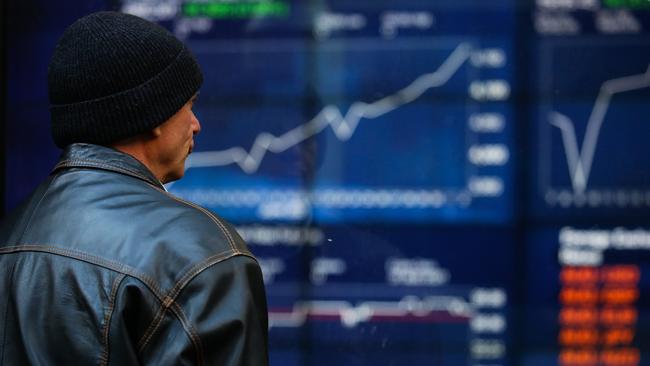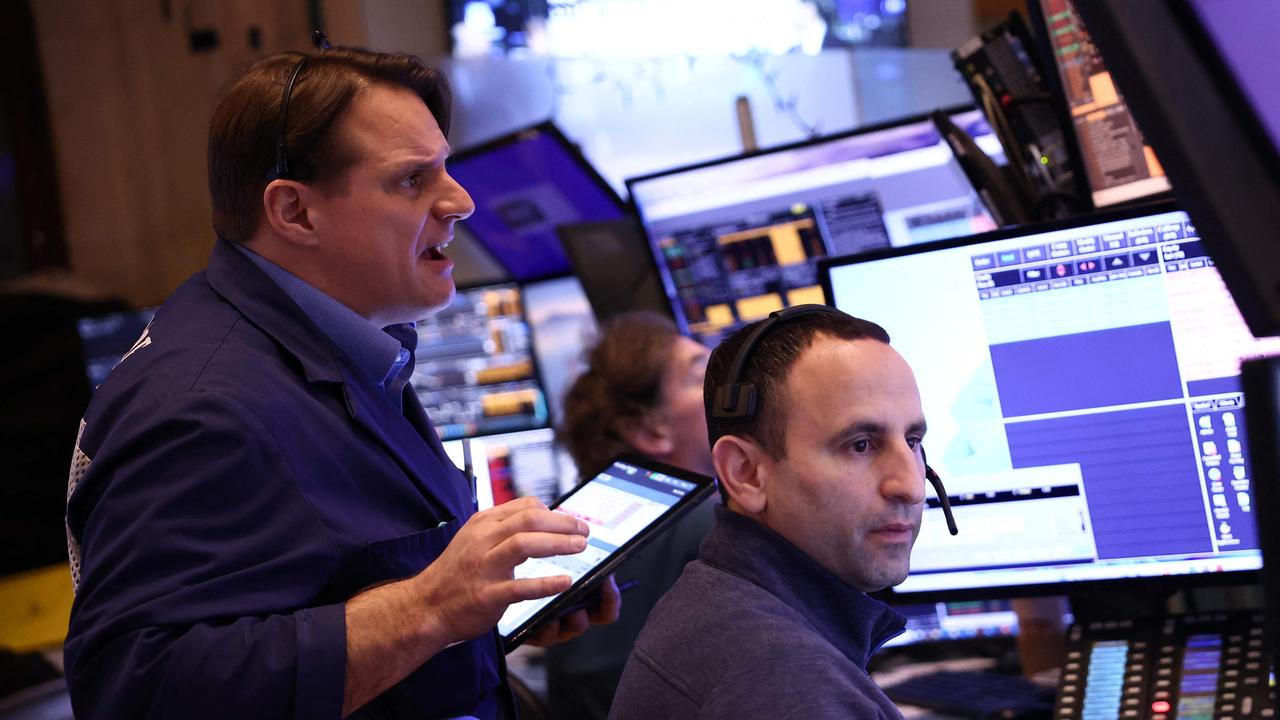ASX 200 braces for rough ride after Wall Street’s brutal sell-off
The Australian sharemarket is set for a rough start to the week after a brutal sell-off on Wall Street on Friday night.

The Australian sharemarket is set for a rough start to the week after a brutal sell-off on Wall Street on Friday night, with investors bracing for a sea of red ahead of crucial rate-setting meetings by the Reserve Bank and US Federal Reserve.
US stocks skidded more than 2.7 per cent in the last trading day of the week, marking the worst month for the Dow Jones Industrial Average and S&P 500 since March 2020, and the Nasdaq’s biggest monthly plunge – at 13.3 per cent – since October 2008.
Tech stocks were hit by worse-than-expected results from Amazon, as well as a warning on rising costs from Apple, while inflation data also weighed on the broader market.
With technology stocks bearing the brunt of the pain in the US, Australia’s sharemarket is set for a milder setback, with SPI futures pointing to a 1.3 per cent drop at the open.
Gold and copper miners may temper some of the losses, while a lower Australian dollar will boost sentiment from offshore buyers, CommSec chief economist Craig James said.
“We haven’t got those big technology sectors they have in the US, so that will provide some sort of support, and a lower Australian dollar is good news for buyers of our share market from overseas and so that’s positive as well,” Mr James said.
“A lower Australian dollar is also good for our exporters, so that’s positive as well and commodity markets were pretty mixed, with modest gains in metals like copper which was up 0.8 per cent, while gold was up too.”
Oil prices, meanwhile, were mixed, with Brent pushing higher as WTI crude slid lower.
“That provides some volatility in terms of the oil markets but not too much in terms of fresh ammunition for the oil traders to work off,” Mr James said.
The iron ore price was also lower, falling 2.9 per cent to $US146.30 a tonne.
Looking ahead, top-shelf indicators released in the coming days include home price data due on Monday followed by retail trade, building approvals and international trade data.
But the big ticket items will be the Reserve Bank’s monthly meeting on Tuesday, which could see the central bank lift rates for the first time in more than a decade, and the US Federal Reserve meeting, which could see a 50 basis point hike.
“It’s basically a coin toss on where we get movement happening in May or June,” Mr James said ahead of the RBA meeting.
“Our major concern is the Reserve Bank has been constantly saying that it wants to see evidence of higher wages before lifting interest rates and we don‘t get the wage data until mid May. So that’s why we’re taking the view that June should be the time that the Reserve Bank lifts interest rates.”
CBA stands apart from the other major lenders with its June hike prediction: Westpac, NAB and ANZ all recently brought forward their forecasts on the back of surging inflation figures.
Westpac and NAB now expect a 0.15 basis point hike in May followed by a 0.25 percentage point hike in June.
Westpac’s chief economist Bill Evans now sees a cash rate peak of 2 per cent by May 2023, “a significantly earlier and more compressed tightening than our forecasts in February”, he said on Friday.
The accelerated interest rate tightening also brings forward the likely peak in dwelling prices, according to Mr Evans. Westpac now expects no further gains in house prices in the near term, with a “correction phase” set to begin within months.







